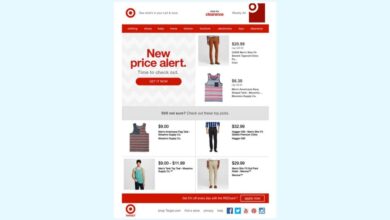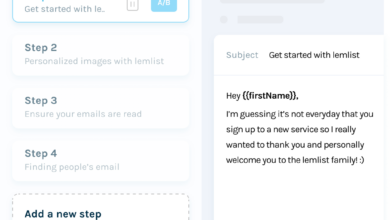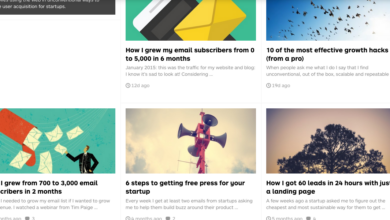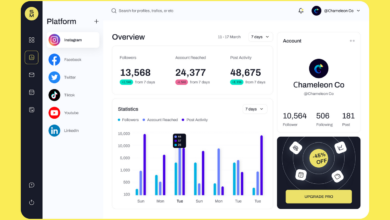
Drip Campaign Marketing Explained A Comprehensive Guide
Drip campaign marketing explained is a powerful strategy for nurturing leads and driving conversions. It involves sending a series of automated emails or other marketing messages over time to engage prospects and customers. This guide delves into the intricacies of drip campaigns, from defining them to optimizing their performance, including building a strategy, crafting engaging content, and integrating them with other marketing channels.
Understanding the different types of drip campaigns, like welcome series and abandoned cart sequences, is crucial. This approach goes beyond simple email blasts, fostering meaningful interactions that build relationships and ultimately boost sales.
Defining Drip Campaigns
Drip campaigns are a strategic marketing approach that delivers a series of automated messages to a specific audience over a period of time. This targeted messaging sequence is designed to nurture leads, educate prospects, and ultimately convert them into customers. The key is personalization and timing; the right message, delivered at the right moment, is crucial for success.Drip campaigns rely on pre-set triggers and sequences, enabling businesses to maintain consistent engagement with their audience without constant manual intervention.
This automated approach frees up valuable marketing resources, allowing teams to focus on other critical tasks. Crucially, drip campaigns build relationships and foster trust, ultimately leading to higher conversion rates.
Drip Campaign Definition
Drip campaigns are automated email marketing sequences that deliver pre-written messages to subscribers at pre-determined intervals. They are not limited to email, however, and can include SMS, social media, or even push notifications. The core principle is to nurture leads and prospects through a series of targeted communications, fostering engagement and ultimately driving conversions. Each message in the sequence is carefully crafted to provide value and move the recipient closer to a desired action, like purchasing a product or signing up for a service.
Core Principles of Drip Campaigns, Drip campaign marketing explained
Drip campaigns are built on several key principles. These include automation, personalization, and a focus on delivering value. Automated sequences allow for efficient communication without manual intervention, while personalization makes each interaction feel more tailored and relevant to the individual recipient. A focus on providing value, whether through educational content, exclusive offers, or helpful resources, builds trust and encourages engagement.
The campaign’s goal should always be clearly defined, with each message designed to move the recipient closer to that goal.
Types of Drip Campaigns
Various types of drip campaigns cater to different marketing objectives. Common examples include:
- Welcome Series: A welcome series typically greets new subscribers with a series of messages that introduce the brand, highlight its offerings, and offer valuable content to keep them engaged. This establishes a positive first impression and fosters loyalty.
- Abandoned Cart Recovery: This type of drip campaign targets customers who have added items to their online shopping cart but haven’t completed the purchase. The campaign typically includes reminders, special discounts, and personalized messages to encourage them to return and finalize the transaction.
- Onboarding Sequences: These sequences guide new users or customers through a product or service, providing step-by-step instructions and support to help them get started and achieve desired results. This fosters product adoption and satisfaction.
- Educational Series: Drip campaigns can be designed to deliver a series of informative and valuable educational content to nurture leads and prospects. These campaigns can include articles, blog posts, videos, and other resources that educate the recipient about a particular topic, building credibility and positioning the brand as an authority.
Characteristics Distinguishing Drip Campaigns
Drip campaigns are distinguished by their automated nature, pre-defined sequences, and focus on nurturing relationships. They contrast with other marketing approaches by their ability to deliver targeted messages at specific times and frequencies, without requiring constant manual intervention. The key is to craft a series of carefully-designed messages that guide the recipient toward a desired outcome, building a relationship over time.
Drip Campaigns vs. Other Marketing Approaches
| Feature | Drip Campaigns | Email Marketing | SMS Marketing | Social Media Marketing ||—|—|—|—|—|| Automation | High (pre-defined sequences) | Varies (can be automated) | Low (typically manual) | Low (typically manual) || Personalization | High (segmenting, personalization) | Moderate (list segmentation) | Low (limited personalization) | Moderate (targeting by interest) || Frequency | High (pre-determined schedule) | Moderate (can be scheduled) | High (real-time or scheduled) | Moderate (posts/engagement frequency) || Engagement | High (interactive and informative messages) | Moderate (depending on content) | High (real-time interactions) | High (user-generated content) || Scalability | High | High | Moderate | High |
Building a Drip Campaign Strategy
Drip campaigns aren’t just automated emails; they’re meticulously crafted sequences designed to nurture leads and convert them into customers. A successful strategy goes beyond simply sending emails; it requires a deep understanding of your target audience, clear goals, and a well-defined plan. This involves careful consideration of every touchpoint in the customer journey, ensuring that each message resonates with the recipient and moves them closer to conversion.Understanding your audience is paramount to a successful drip campaign.
Knowing their needs, pain points, and motivations allows you to tailor each email to address specific concerns and offer relevant solutions. This personalized approach builds trust and fosters engagement, ultimately leading to higher conversion rates. A deep understanding of your audience also enables you to segment them effectively, creating more targeted and effective communication.
Understanding Your Target Audience
Understanding your target audience is the cornerstone of any effective drip campaign. It’s not enough to simply know their demographics; you need to delve deeper into their psychographics, behaviors, and motivations. What are their aspirations? What challenges do they face? What are their values?
This detailed understanding allows you to craft messaging that resonates with their unique needs and desires.Consider these examples:
- A fashion retailer targeting young professionals might focus on emails showcasing stylish, professional attire, highlighting time-saving features, and incorporating aspirational lifestyle imagery.
- A financial advisor targeting retirees might emphasize security, peace of mind, and financial planning tools, including case studies highlighting successful retirement strategies.
- A software company targeting small business owners might focus on emails demonstrating how their software streamlines workflows, increases productivity, and saves time, including user testimonials and success stories.
These examples demonstrate how tailoring the content to specific audience segments enhances engagement and drives conversions.
Setting Clear Goals and Objectives
Before launching any drip campaign, clearly define your objectives. What do you hope to achieve? Increased website traffic? Lead generation? Sales conversions?
Drip campaigns are a fantastic way to nurture leads and build relationships with potential students. They involve strategically sending a series of automated emails, each tailored to a specific stage of the buyer’s journey. This approach is crucial for online course providers looking to maximize engagement. To ensure your campaigns are truly effective, partnering with the right social media marketing (SMM) providers, like the ultimate smm providers for online course providers , is essential.
Ultimately, a well-executed drip campaign can significantly boost conversions and lead to a thriving online course business.
Specific, measurable, achievable, relevant, and time-bound (SMART) goals provide a roadmap for your campaign and allow you to track its effectiveness. Without clear goals, it’s challenging to gauge the success of your drip campaign and make necessary adjustments.
Key Stages in Creating a Drip Campaign Strategy
A structured approach is crucial for creating an effective drip campaign strategy. This table Artikels the essential steps involved in developing and executing a successful drip campaign:
| Stage | Description |
|---|---|
| 1. Define Target Audience | Identify key characteristics, needs, and motivations of your ideal customer. This includes demographics, psychographics, and behavioral patterns. |
| 2. Establish Campaign Goals | Clearly define what you want to achieve with the drip campaign (e.g., lead generation, sales conversion, brand awareness). Set SMART goals. |
| 3. Segment Your Audience | Divide your target audience into smaller, more manageable groups based on shared characteristics. This allows for more tailored messaging. |
| 4. Craft Compelling Email Content | Develop engaging and informative content that resonates with each segment. Focus on providing value to your audience. |
| 5. Design Email Sequences | Create a series of emails that gradually educate, inform, and guide recipients towards the desired outcome. Consider the recipient’s journey. |
| 6. Schedule and Monitor Performance | Set up automated email delivery and track key metrics (open rates, click-through rates, conversions). Analyze results and make adjustments as needed. |
Crafting Engaging Drip Emails
Drip campaigns are powerful marketing tools, but their effectiveness hinges on creating engaging email content that resonates with subscribers. A poorly designed drip email sequence can quickly lead to subscriber fatigue and unsubscribe rates. Crafting engaging content for each step is crucial for nurturing leads and driving conversions. By focusing on personalization, clear calls to action, and a consistent brand voice, marketers can maximize the impact of their drip campaigns.
Personalization in Drip Emails
Personalization is key to making drip emails feel less like automated messages and more like genuine interactions. By tailoring content to individual subscriber preferences and behaviors, marketers can foster stronger relationships and drive higher engagement rates. This includes using subscriber data to segment audiences and tailor content accordingly. This approach moves beyond generic messages and creates a more human touch, increasing the chances of conversions.
Drip campaigns are essentially automated email sequences, perfect for nurturing leads and keeping your audience engaged. Understanding how to craft compelling email copy and segment your audience is key to a successful drip campaign. This often involves optimizing for click-through rates (CTR), which can be dramatically improved by focusing on the content itself and how it’s presented. For a deeper dive into CTR and how to maximize it, check out this great resource on ctr click through rate marketing explained.
Ultimately, the goal of any drip campaign is to guide prospects through the sales funnel, and CTR is a crucial metric in achieving that.
Crafting Engaging Email Content
Each email in a drip campaign should be meticulously crafted to address the specific needs and interests of the recipient at that stage of the buyer’s journey. This involves understanding the recipient’s position in the sales funnel and adjusting the tone and content accordingly. The initial email should immediately grab attention, while subsequent emails should build upon previous interactions and offer valuable insights.
Personalized Email Subject Lines
Subject lines are the first point of contact, and a compelling subject line can significantly impact open rates. Generic subject lines often get lost in the inbox clutter. Here are some examples of personalized subject lines:
- Example 1: “Personalized Recommendations for [User’s City] Homes”
- Example 2: “[User’s Name], We’ve noticed your interest in [Product Category], here’s a special offer.”
- Example 3: “Exclusive content just for you: [User’s Name]
-Your Free Guide to [Relevant Topic]”.
Personalized Email Body Content
The email body should further personalize the interaction. Address the recipient by name and tailor the content to their specific needs and interests. Instead of generic advice, offer targeted solutions. For instance, if a subscriber has expressed interest in a particular product, tailor the email to highlight that product’s benefits.
- Example 1: “We understand you’re looking for a [product type] in [location]. Here are some options perfectly suited to your needs…”
- Example 2: “Based on your past interactions, we’ve curated a list of [product type] that align with your preferences. Check them out here…”
Calls to Action in Drip Emails
Calls to action (CTAs) are essential for guiding recipients toward the desired outcome. They need to be clear, concise, and compelling. The placement of the CTA is just as important as its design.
| Drip Campaign Stage | CTA Type | Example |
|---|---|---|
| Awareness | Learn More | “Discover more about [product/service] in our comprehensive guide.” |
| Consideration | Request a Demo | “Schedule a personalized demo with one of our experts.” |
| Decision | Purchase Now | “Claim your exclusive discount and purchase [product] now!” |
| Retention | Upgrade Account | “Enhance your experience with our premium account – upgrade now.” |
Implementing and Monitoring Drip Campaigns
Drip campaigns, when implemented correctly, can be a powerful tool for nurturing leads and driving conversions. They allow you to automate the communication process, ensuring consistent engagement with your audience at their own pace. This crucial step in the campaign lifecycle demands careful implementation and ongoing monitoring to ensure effectiveness.Effective implementation and diligent monitoring are critical to maximizing the ROI of your drip campaigns.
Understanding the nuances of both phases ensures that your automated messages resonate with your audience and ultimately achieve your marketing objectives.
Implementing a Drip Campaign in Marketing Automation Platforms
Implementing a drip campaign within a marketing automation platform is a straightforward process. Begin by defining the target audience and their desired journey. This crucial step involves identifying specific user segments based on demographics, behavior, and engagement history. Next, create a series of emails or other content pieces that align with this defined journey. These might include welcome messages, product demonstrations, exclusive offers, and valuable content.
The automation platform will then trigger these communications based on pre-defined schedules or user actions. This streamlined approach ensures that the right message reaches the right person at the right time.
Tracking and Measuring Drip Campaign Success
Measuring the effectiveness of a drip campaign is essential for optimization. Key metrics provide valuable insights into campaign performance, allowing you to adjust and refine your strategy for better results. Using these metrics will help identify what’s working and what needs adjustment.
Metrics for Drip Campaign Effectiveness
- Open Rates: Open rates reveal the percentage of recipients who opened your emails. A high open rate indicates that your subject lines and email content are engaging and relevant to the audience. A consistently low open rate suggests that you need to refine your subject lines or the overall content of your emails to better capture attention.
- Click-Through Rates (CTR): CTR measures the percentage of recipients who clicked on a link within your email. This metric indicates how compelling your email content is and how effectively you’re guiding recipients to desired actions. A low CTR could signal the need for clearer calls to action or more compelling content.
- Conversion Rates: Conversion rates reflect the percentage of recipients who completed a desired action, such as making a purchase or signing up for a webinar. This is the ultimate measure of campaign success, as it directly ties to achieving your marketing goals. Monitoring conversion rates allows you to fine-tune your drip campaign to optimize conversion paths.
- Bounce Rates: Bounce rates represent the percentage of emails that couldn’t be delivered. High bounce rates may point to issues with your email list (e.g., invalid email addresses), and require list hygiene and maintenance.
- Unsubscribe Rates: Unsubscribe rates reflect the percentage of recipients who opted out of receiving your emails. A high unsubscribe rate might suggest that your emails aren’t relevant or engaging, or your communications are too frequent.
Segmenting and Personalizing Drip Campaigns Based on User Behavior
Personalization is key to maximizing the impact of drip campaigns. Segmenting your audience based on behavior allows you to tailor your communications to resonate with specific groups. This strategy leverages insights from user interactions, such as past purchases, website activity, or engagement with previous emails. Tailoring the messaging ensures that each recipient receives content that’s genuinely relevant to their needs and preferences, leading to higher engagement and conversions.
Drip Campaign Effectiveness Metrics Table
| Metric | Definition | Importance | Example |
|---|---|---|---|
| Open Rate | Percentage of recipients who opened the email. | Indicates engagement with the subject line and content. | 80% open rate suggests strong engagement. |
| Click-Through Rate (CTR) | Percentage of recipients who clicked a link in the email. | Measures the effectiveness of calls to action and content. | 15% CTR shows moderate engagement with links. |
| Conversion Rate | Percentage of recipients who completed a desired action. | Direct measure of campaign success and ROI. | 5% conversion rate means 5 out of 100 recipients completed a purchase. |
| Bounce Rate | Percentage of emails that couldn’t be delivered. | Indicates potential issues with email list quality. | 2% bounce rate suggests minimal list hygiene problems. |
| Unsubscribe Rate | Percentage of recipients who unsubscribed. | Indicates email relevance and frequency. | 3% unsubscribe rate suggests moderate relevance. |
Optimizing Drip Campaign Performance: Drip Campaign Marketing Explained

Drip campaigns, when meticulously crafted and consistently monitored, can be incredibly effective marketing tools. However, achieving optimal results requires a proactive approach to analyzing performance and iterating on the campaign sequence. This involves understanding key metrics, experimenting with different approaches, and incorporating valuable user feedback. Continuous improvement is crucial to maximizing the impact of your drip campaigns.Understanding your campaign’s performance is crucial for refining its effectiveness.
By tracking key metrics, you can pinpoint areas for improvement and ensure your emails are reaching the right audience at the right time. This iterative process is essential to build engagement and achieve desired results.
Analyzing Drip Campaign Performance
Tracking key metrics such as open rates, click-through rates, conversion rates, and unsubscribe rates is essential for understanding campaign performance. These metrics provide valuable insights into what resonates with your audience and what elements might need adjustment. Tools like email marketing platforms offer built-in analytics dashboards to help visualize this data.
Improving Drip Campaign Sequences
Testing and iterating on drip campaign sequences is a critical aspect of optimization. A/B testing allows you to compare different versions of email content to see which performs better. This involves changing various aspects of your emails to assess the impact on key metrics. For instance, you could experiment with different subject lines, email content, call-to-actions, or send times.
A/B Testing Drip Campaign Elements
A/B testing is a powerful method for improving drip campaigns. Testing different elements like subject lines can significantly impact open rates. For example, one subject line might emphasize urgency, while another highlights value. Testing these variations allows you to determine which resonates more effectively with your audience. Similarly, testing variations in email content, such as different calls to action or different formatting styles, can lead to noticeable improvements in click-through rates.
Consider A/B testing the email’s overall design and layout to ensure it’s visually appealing and easy to navigate.
Analyzing User Feedback
User feedback provides crucial insights for optimizing drip campaigns. Analyzing user behavior and feedback allows you to understand what resonates with your audience and what aspects need improvement. Collecting feedback through surveys, polls, or direct communication channels can be invaluable in this process.
Best Practices for Optimizing Drip Campaign Performance
| Aspect | Best Practice |
|---|---|
| Subject Lines | Test different subject lines, using variations that highlight value, urgency, or curiosity. |
| Email Content | Craft compelling content that addresses user needs and provides relevant information. Include clear calls to action. |
| Segmentation | Segment your audience based on demographics, behavior, or interests to tailor email content and timing to specific groups. |
| Timing | Experiment with different sending times to optimize open and click-through rates. Consider when your target audience is most active. |
| Call-to-Action (CTA) | Use clear and compelling CTAs that guide users to the desired action. Ensure CTAs are prominent and easy to identify. |
| Personalization | Personalize email content based on user data, such as name or past interactions. This improves engagement. |
| Monitoring & Analysis | Continuously monitor key metrics (open rates, click-through rates, conversions) and analyze data to identify areas for improvement. |
| Testing | Employ A/B testing to compare different versions of emails and determine which performs better. |
| User Feedback | Actively collect user feedback through surveys or direct communication to understand what resonates with your audience and improve the campaign. |
Integrating Drip Campaigns with Other Channels
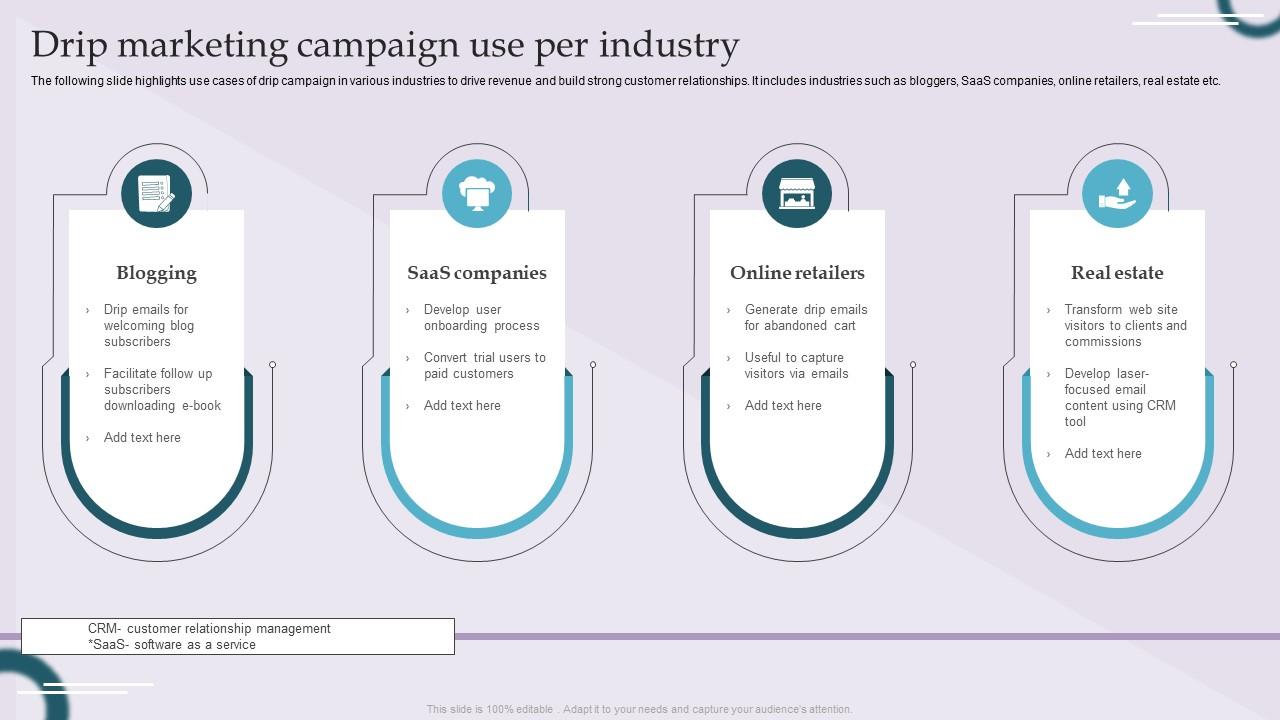
Drip campaigns aren’t islands; they thrive when integrated with other marketing channels. A cohesive strategy, blending email sequences with social media promotions, paid ads, and even in-app messaging, amplifies your reach and significantly improves customer engagement. This interconnected approach allows for a personalized and consistent brand experience, nurturing leads and driving conversions more effectively.Integrating drip campaigns with other channels creates a powerful feedback loop.
Tracking data from different platforms, like click-through rates on social media posts linked to email sign-up forms, reveals which campaigns resonate best. This actionable intelligence lets you optimize future campaigns and improve overall marketing ROI.
Social Media Integration
Drip campaigns excel at nurturing leads and converting them into customers. Social media is perfect for initial engagement and brand building. Use social media posts to promote the drip campaign, driving traffic to a landing page for sign-ups. Include compelling visuals and short, engaging copy. Encourage interaction by asking questions and running contests.
Then, your drip emails provide the detailed information and nurturing content to keep prospects engaged and moving toward a conversion.
Paid Advertising Integration
Paid advertising can quickly reach a large audience. Combine this with drip campaigns to maximize impact. Target ads to specific demographics and interests. Use the ads to drive traffic to a landing page where users can opt-in for your drip campaign. The drip campaign then guides them through the sales funnel, providing relevant content and fostering a relationship.
Drip campaigns are a fantastic way to nurture leads and keep your audience engaged. Think of it like a personalized conversation, where you send out a series of targeted messages over time. This is especially useful for dental clinics, as a targeted drip campaign can help remind patients about upcoming appointments or special offers. Consider using a specialized social media management service like specialized social media management for dental clinics to help you streamline your approach.
This helps you create a consistent flow of valuable content, keeping your audience engaged and driving conversions. Ultimately, drip campaigns are a powerful tool for boosting engagement and patient retention.
By directing paid traffic into a well-defined drip campaign, you can improve conversion rates.
In-App Messaging Integration
Drip campaigns can be remarkably effective when combined with in-app messaging. Once a user downloads your app, you can immediately begin a drip campaign that provides helpful tutorials, tips, or exclusive offers. This reinforces engagement and builds brand loyalty, while encouraging repeat use. The drip campaign could provide tips on using specific app features, leading to more frequent use and better engagement.
Cohesive Marketing Strategy
A cohesive marketing strategy is essential for successful integration. All channels should work in harmony to deliver a unified brand message. Use consistent branding, messaging, and visuals across all platforms. This creates a seamless experience for the customer, strengthening brand recognition and trust. A consistent brand identity fosters stronger customer relationships and drives conversions.
Customer Retention Strategies
Drip campaigns are vital for customer retention. By providing ongoing value, you keep customers engaged and coming back for more. A drip campaign could feature exclusive content, special offers, or reminders about upcoming events. This reinforces the value proposition and keeps the customer actively involved. Drip campaigns are crucial for encouraging repeat purchases and building brand loyalty.
Table: Integrating Drip Campaigns with Different Channels
| Channel | Integration Strategy | Example |
|---|---|---|
| Social Media | Promote drip campaign sign-ups through posts, stories, and ads. Use compelling visuals and concise copy. | Run a contest on Instagram to promote a lead magnet and drip campaign sign-up. |
| Paid Advertising | Target ads to specific demographics and interests, driving traffic to a landing page for sign-ups. | Use Google Ads to target users interested in specific products, linking to a landing page where they can opt into a relevant drip campaign. |
| In-App Messaging | Welcome new users with a drip campaign of tutorials, tips, or exclusive offers. | Immediately after downloading the app, send a series of emails introducing app features and functionalities. |
Examples of Successful Drip Campaigns
Drip campaigns, when executed effectively, can significantly boost engagement and conversions. They’re not just about sending out emails; they’re about nurturing leads and building relationships. Learning from successful campaigns provides invaluable insights into what works and how to avoid pitfalls. This section dives into real-world examples, highlighting key elements and lessons learned.
Retailer Drip Campaigns: A Focus on Personalized Experiences
Retailers frequently use drip campaigns to guide customers through the buying process and increase customer lifetime value. Personalized experiences are key to success. These campaigns aim to move potential customers from initial awareness to purchase and beyond, nurturing their interest with relevant product information, exclusive offers, and helpful content.
- A clothing retailer might send a welcome email with a discount code, followed by emails showcasing new arrivals and style tips, tailored to the customer’s past purchases. They could then send an email offering a free shipping threshold, driving a final purchase. This phased approach increases engagement and encourages customers to return.
- A furniture store could send a series of emails detailing the benefits of different furniture types. They might then follow up with emails featuring customer testimonials, highlighting the durability and quality of their products. Ultimately, they could include exclusive promotions for a limited time to incentivize purchases.
E-learning Platform Drip Campaigns: Building Community
E-learning platforms use drip campaigns to engage students and encourage ongoing learning. By consistently providing value, they cultivate a sense of community and encourage enrollment in future courses.
- An online cooking school might send a welcome email with access to a free recipe guide, followed by emails showcasing featured courses and providing insights into popular cooking techniques. This drip campaign builds anticipation and encourages engagement with the platform.
- A coding bootcamp could send introductory emails outlining the curriculum and offering access to free online resources. Later emails might include motivational messages, testimonials from previous students, and progress tracking updates. This keeps students engaged and provides encouragement throughout their learning journey.
Key Success Factors and Challenges
Successful drip campaigns share common characteristics, while challenges often stem from poor planning and execution.
“Personalization is crucial for engagement. Tailoring emails to individual customer behavior and preferences significantly boosts open and click-through rates.”
- Segmentation: Dividing your audience into specific groups based on their interests and behaviors allows for highly targeted messaging. This personalization is key to success.
- Clear Goals: Defining specific, measurable, achievable, relevant, and time-bound (SMART) goals for your campaign ensures that every email contributes to a larger objective. Without clear goals, campaigns risk losing focus.
- Automation: Automating the process saves time and resources. Using tools that schedule emails and trigger responses based on user actions streamlines the process. However, over-reliance on automation without human oversight can lead to ineffective messaging.
Challenges and Solutions
Despite their potential, drip campaigns can face hurdles. High unsubscribe rates can be a problem if the emails are not relevant or engaging. Finding the right balance between automation and human touch is essential.
“A well-defined segmentation strategy allows for more personalized communication, thus reducing the risk of irrelevant content and unwanted emails.”
- Maintaining Engagement: Sending too many emails or sending irrelevant content can lead to low engagement and high unsubscribe rates. Keeping emails relevant and valuable is crucial.
- Testing and Optimization: Regularly testing different subject lines, email content, and sending times can identify what resonates best with your audience. This iterative process ensures the campaign remains effective.
Last Recap
In conclusion, drip campaign marketing is a multifaceted approach that goes beyond traditional email marketing. By understanding the principles of drip campaigns, crafting engaging content, and meticulously monitoring performance, businesses can leverage this strategy to build strong relationships with their audience and achieve remarkable results. This comprehensive guide provides a solid foundation for implementing and optimizing your own drip campaigns for maximum impact.
